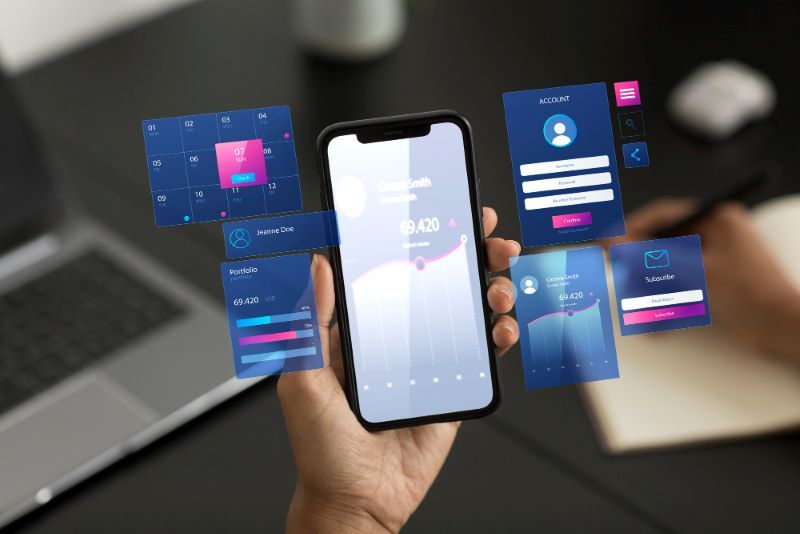In today’s digital world, having your own app can be a game changer, whether you’re starting a business, solving a problem, or simply making life easier for others. If you’ve ever said to yourself, I want to create an app, where do I start?, you’re in the right place. Building an app from scratch can seem overwhelming, but with the right guidance and strategy, it becomes much more manageable.
This comprehensive guide will walk you through the process step by step, making it easy to understand the journey of creating a successful app, from brainstorming your idea to launching it in the app store.
1. Define Your App’s Purpose
Every successful app starts with a clear and well-thought-out idea. When asking yourself, I want to create an app where do I start?, the first step is identifying the purpose of your app. Why should your app exist? What problem does it solve?
Ask These Questions to Refine Your Idea:
- Who is your target audience?
- What unique value does your app offer to users?
- Is there a similar app already on the market? How will yours be different?
Once you’ve clearly defined your app’s purpose, you’ll have a solid foundation to build upon. Make sure your idea is focused, specific, and aligned with your goals.
2. Conduct Market Research
After defining your app’s purpose, the next step is to conduct thorough market research. This will help you understand your competition and the demand for your app. You’ll want to identify gaps in the market where your app can stand out and opportunities for innovation.
How to Conduct Effective Market Research:
- Analyze Competitors: Find out what similar apps exist, their strengths, weaknesses, and user reviews. Look for ways you can improve upon what’s already available.
- Study Your Target Audience: Understanding who will use your app is key to designing features that cater to their needs.
- Evaluate Demand: Use tools like Google Trends and keyword research to see how many people are searching for solutions similar to what your app offers.
3. Choose Your App Development Method
One of the most critical decisions when embarking on the journey of app creation is selecting the right method for development. The development path you choose will depend on factors like your technical skills, budget, and timeline. As someone wondering, I want to create an app, where do I start?, you’ll likely fall into one of these categories:
Three Main Development Methods:
- Hire a Development Team: If you have a budget and want a professionally developed app, consider hiring a team of developers. This ensures high-quality, custom-built apps tailored to your exact needs.
- Use an App Builder: For those with little technical expertise or a smaller budget, app-building platforms like Appy Pie, BuildFire, or Bubble offer drag-and-drop solutions. While they may not offer full customization, they allow you to create functional apps without coding.
- Learn to Code: If you’re tech-savvy and want complete control over your app, learning to code is an option. Platforms like Codecademy and Udemy offer courses in app development, helping you build your skills.
4. Plan Your App’s Features
With your development method chosen, it’s time to map out the specific features your app will have. The temptation to add every feature you can think of may be strong, but focusing on simplicity will lead to a better user experience.
Key Features to Consider:
- Core Functionality: What are the primary tasks your app should perform? List the most important features first and prioritize them.
- User Interface (UI) Design: Your app should be visually appealing and intuitive. Ensure that users can navigate easily and perform actions with minimal effort.
- Security and Privacy: Apps that handle sensitive user information should have security measures like encryption and user authentication.
- Scalability: As your user base grows, your app should be able to handle increased traffic and demand.
Creating a Minimum Viable Product (MVP) is a smart way to start. An MVP includes only the essential features necessary for your app to function. You can always add more features based on user feedback and future updates.
5. Design and Prototype Your App
Design plays a crucial role in your app’s success. Once you’ve decided on the features, work on creating a prototype. A prototype is a mockup of what your app will look like and how it will function. It’s not fully functional but gives a good sense of the app’s flow and design.
Tools for Designing and Prototyping:
- Figma and Sketch are popular tools for app design.
- InVision allows you to create interactive prototypes.
- Adobe XD is another great choice for designing both web and mobile interfaces.
When you’re designing, keep your users in mind. Ensure that the layout is intuitive, the colors are appealing, and the buttons are easy to tap. A good design makes the user experience seamless.
6. Develop Your App
Once your design is ready, it’s time to start developing. Whether you’re using an app builder, coding it yourself, or working with a development team, this stage will focus on translating your designs into a functional product.
Steps During the Development Process:
- Front-End Development: This is what users see and interact with, including the UI and navigation.
- Back-End Development: This involves the server, database, and app logic, ensuring the app performs its tasks correctly.
- API Integration: If your app connects with other services or tools, you’ll need to integrate APIs.
Testing your app continuously during the development phase is essential to catch bugs and ensure everything functions smoothly.
7. Test Your App Thoroughly
Before launching, you need to put your app through rigorous testing. Your app should work flawlessly on all platforms and devices it’s designed for, without crashing or displaying errors.
Types of Testing to Perform:
- Functional Testing: Ensure every feature works as expected.
- Performance Testing: Check how your app performs under heavy use.
- Usability Testing: Observe how real users interact with your app to identify any pain points or areas of confusion.
- Security Testing: Ensure your app protects user data and is safe from potential vulnerabilities.
Conduct both in-house and beta testing to gather feedback and improve your app before release.
8. Launch and Promote Your App
Finally, it’s time to launch your app. Submit it to app stores like Google Play and Apple App Store. Ensure you follow each platform’s guidelines for app submission, including testing on real devices, writing a compelling app description, and preparing attractive screenshots.
Promoting Your App:
- Create a landing page: Drive traffic and inform users about your app’s features and benefits.
- Social media marketing: Build an online presence and promote your app through platforms like Instagram, Facebook, and LinkedIn.
- App store optimization (ASO): Similar to SEO, use targeted keywords in your app’s title and description to improve its visibility.
- Influencer collaborations and reviews: Partner with influencers or tech reviewers to spread the word.
Conclusion: Building an App Is Achievable with the Right Strategy
When it comes to the question, I want to create an app, where do I start?, the answer lies in planning, research, and a solid development process. From refining your idea to launching and promoting your app, every step is crucial to ensuring your app’s success. By following this comprehensive guide, you’ll be well on your way to turning your vision into a reality.
For more interesting blogs click here.




